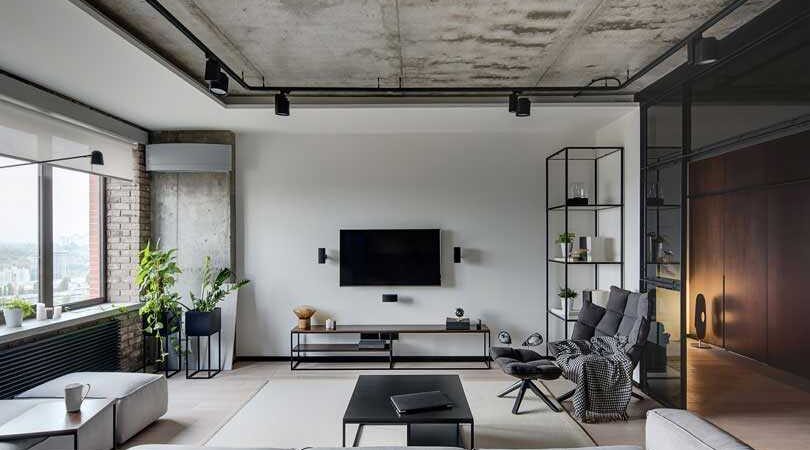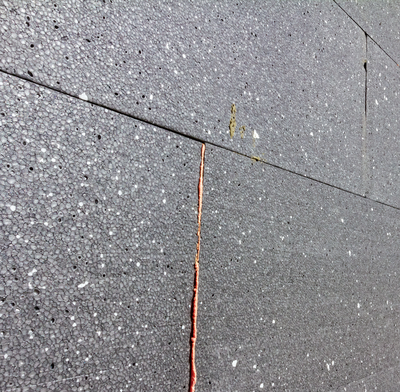
Practical Examples of Using Decorative Concrete Plaster in Interior Design

Let’s revisit the concrete trend! Concrete Plaster is a fashionable decorative coating that makes a wall look indistinguishable from real concrete. Its appeal lies in its uniqueness—no two applications will ever be identical. But where should you use it to captivate rather than overwhelm? How can you highlight its qualities? Here are some tips and ideas

Concrete Plaster: Endless Design Possibilities
Authentic Natural Concrete Imitations
By applying Concrete Plaster skillfully, you can achieve not only a raw concrete look but also other textures, such as the effect of wooden formwork, concrete panels, or industrial molds. It can be finished in a matte or satin look, with smooth or rough surfaces. Using pigments, you can create various shades, giving you extensive creative options.
From Living Rooms to Everywhere: Concrete Takes Over
Concrete walls are one of the hottest trends in modern interior design, continually evolving. Initially confined to industrial and loft-style spaces, it’s now found everywhere—living rooms, kitchens, and bedrooms—bringing originality and a chic rawness to interiors. Lightweight decorative Concrete Plaster is often used as a substitute for heavy, real concrete.
Concrete Plaster works perfectly in minimalist designs, where individual elements define the room’s character. It also complements more traditional interiors.
The concrete effect offers a cool and somewhat austere aesthetic. If it feels too stark, you can warm it up with natural materials like wood. The warmth of wood tones balances the coolness of concrete. Pairing a concrete wall with light, smooth walls enhances its visual impact.
For those who prefer cooler aesthetics, amplify the concrete effect with metal, glass, and complementary fabrics. Concrete walls also look stunning alongside various shades of gray, classic black, and bright white.
Increasingly, concrete plaster is being applied to ceilings to create a bold, loft-inspired look. This approach adds a unique, avant-garde atmosphere reminiscent of old factories.



Concrete Plaster for Architectural Details
Decorative Concrete Plaster is ideal for finishing architectural features such as bay windows, niches, or even fireplace surrounds. This ensures the texture draws attention without overwhelming the space.
A Bedroom with a Concrete Wall
Concrete isn’t just for living rooms—it’s also a great choice for bedrooms, spaces meant for relaxation and calm. Subdued, neutral colors create a tranquil environment, and a concrete wall can add visual interest. For example, using it behind a bed’s headboard emphasizes the furniture and provides a perfect backdrop for selected accessories.
Lighting is crucial in a bedroom with a concrete wall—well-placed lights will highlight the texture beautifully while creating a restful ambiance.
A Bathroom with a Concrete Wall
Concrete Plaster is a standout choice for bathrooms. What makes it so appealing? Its universality. Like black and white, concrete complements any color scheme and remains timeless. It lends a modern, elegant look to bathrooms. Plus, it’s cost-effective compared to tiles.
A Concrete Wall in the Hallway
The hallway is often overlooked in interior design, but it’s the first impression of your home!
If you choose a concrete wall for the hallway, ensure the texture is accentuated with proper lighting. Adding large mirrors with frames that match your home’s style can enhance the effect. For industrial designs, exposed pipes or metal details can complete the look.
Your hallway should set the tone for the rest of the home, seamlessly tying the spaces together.

Concrete Plaster in Kitchens and Kids’ Rooms
Concrete Plaster isn’t just for main areas—it works beautifully in kitchens and children’s rooms too. A concrete wall above the kitchen counter or as an accent in a kids’ room can look stunning. The final result depends on your creativity!
Concrete continues to captivate with its versatility and charm in various applications. This is why we so often turn to its alternatives to recreate the raw, striking effect it offers.





